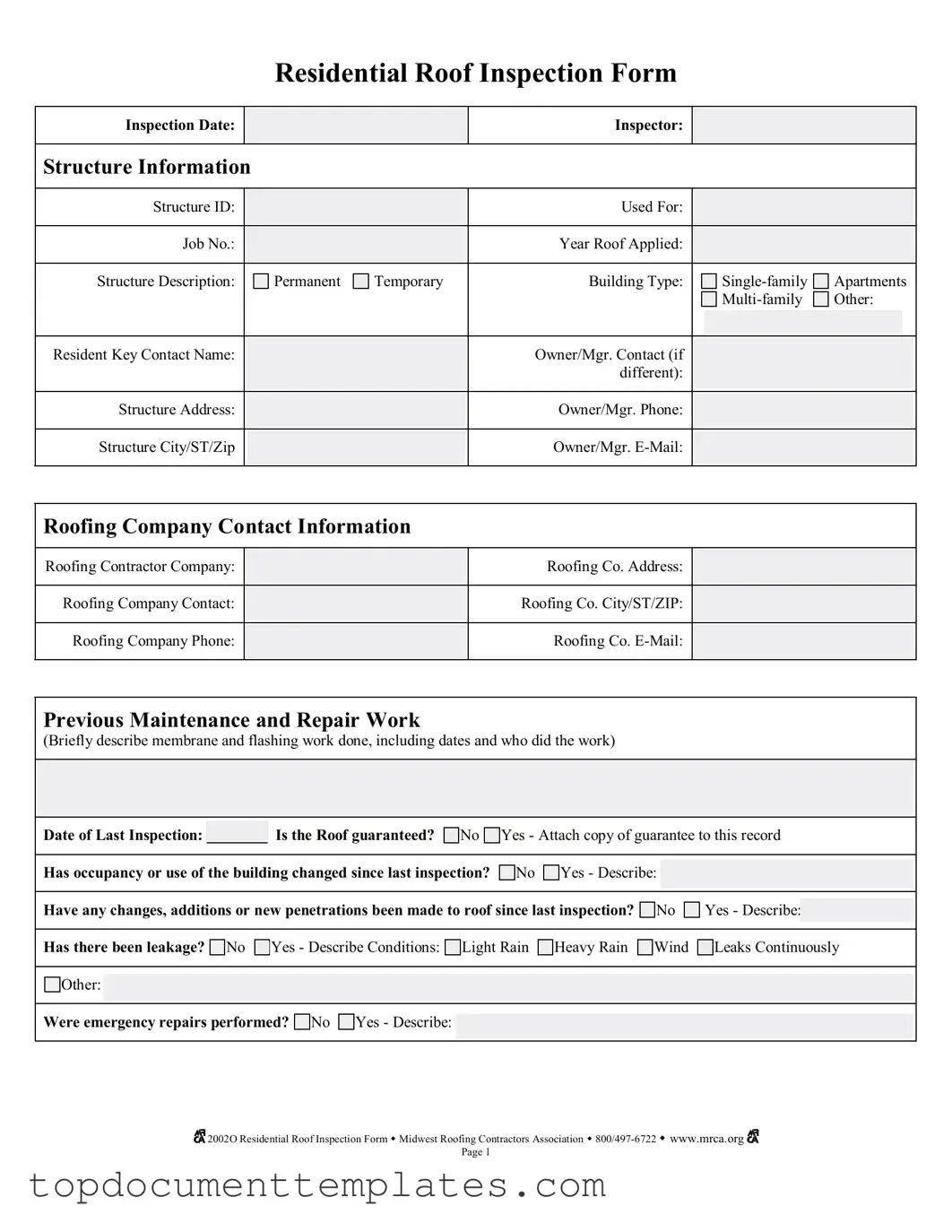When it comes to maintaining the integrity of your home, a thorough roof inspection is essential. The Roof Inspection Form is a comprehensive tool that helps ensure every aspect of your roof is carefully evaluated. This form includes vital information such as the inspection date, the inspector's name, and the structure details, including its address and type—whether it's a single-family home, an apartment, or something else. It also captures the roofing contractor's contact information, ensuring that all parties involved are easily reachable. The form prompts inspectors to note any previous maintenance or repairs, helping to track the roof's history. Key questions address whether there have been any leaks, changes in building occupancy, or modifications to the roof itself since the last inspection. Furthermore, the form employs a simple coding system to assess various conditions, from the roof deck to the drainage systems, allowing for clear communication about the state of the roof. By documenting these details, the Roof Inspection Form not only aids in immediate assessments but also contributes to long-term maintenance planning, ensuring that your roof remains in good condition for years to come.
